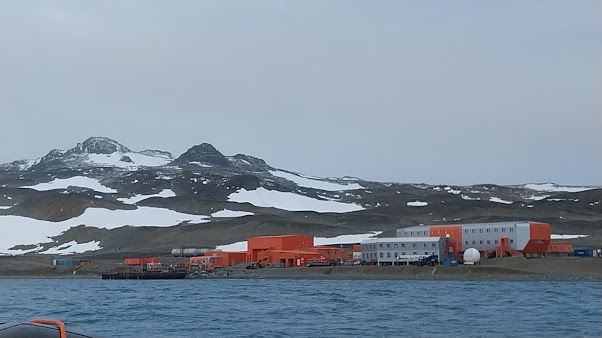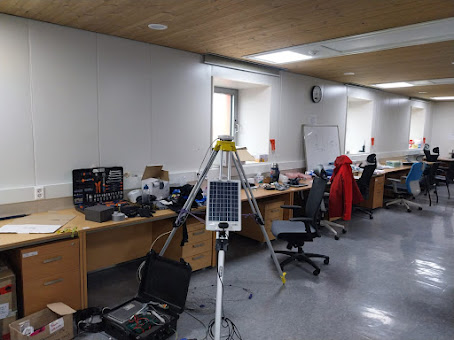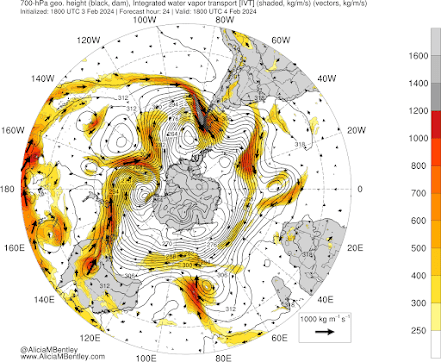Arrival to King Sejong
We are back at the Korean Antarctic station King Sejong on King George Island, northern Antarctic Peninsula and continue our measurements and exploration of this beautiful and rapidly changing place. The project this year is APMAR2024 - Antarctic Peninsula surface Mass and energy balance: the role of Atmospheric Rivers, supported by the Portuguese Polar Program in collaboration with Korean Polar Research Institute.
Photo: arriving to the King Sejong station on 1 February 2024. ©Irina Gorodetskaya
APMAR2024 team is Irina Gorodetskaya (principal researcher at CIIMAR and the project PI), Claudio Durán-Alarcón (junior researcher at CIIMAR) and Yosvany Garcia Santos (PhD student at the University of Concepcion in Chile and doing an internship at CIIMAR).
Photo: APMAR2024 team - Claudio, Yosvany and Irina – at King Sejong station.
Our plan this year is to continue observing atmospheric rivers, and investigate deeper how they form and how they influence the surface mass and energy balance of the northern Antarctic Peninsula, compared to other weather events. Continuing this work has been especially motivated by the article we published about an intense atmospheric river observed on 7-8 February 2022 causing record-high temperatures and surface melt all over the Antarctic Peninsula.
Precipitation is a major component of the surface mass balance and we measure precipitation with MRR-PRO radar – in collaboration with Vincent Favier, Researcher at IGE - Institut des Géosciences de l'Environnement, Grenoble, France, and project ANR-ARCA. We installed MRR-Pro at King Sejong last year and it has been working autonomously all year around providing vertical profiles of rainfall and snowfall up to 6 km above ground at 1-min temporal resolution. Returning this year we found the radar in perfect condition and it will continue measuring for another year.
Photo: Claudio and Irina happy to find MRR-Pro radar after it has been measuring precipitation all Antarctic winter. photo
We also collect precipitation samples for analyzing stable water isotopes and microbiological composition. And last but not least - we launch radiosondes to see how temperature, wind and humidity changes with height (from the surface and beyond 25 km altitude).
Photo: Yosvany ready to launch a meteorological balloon.
Stay tuned!






Comments
Post a Comment